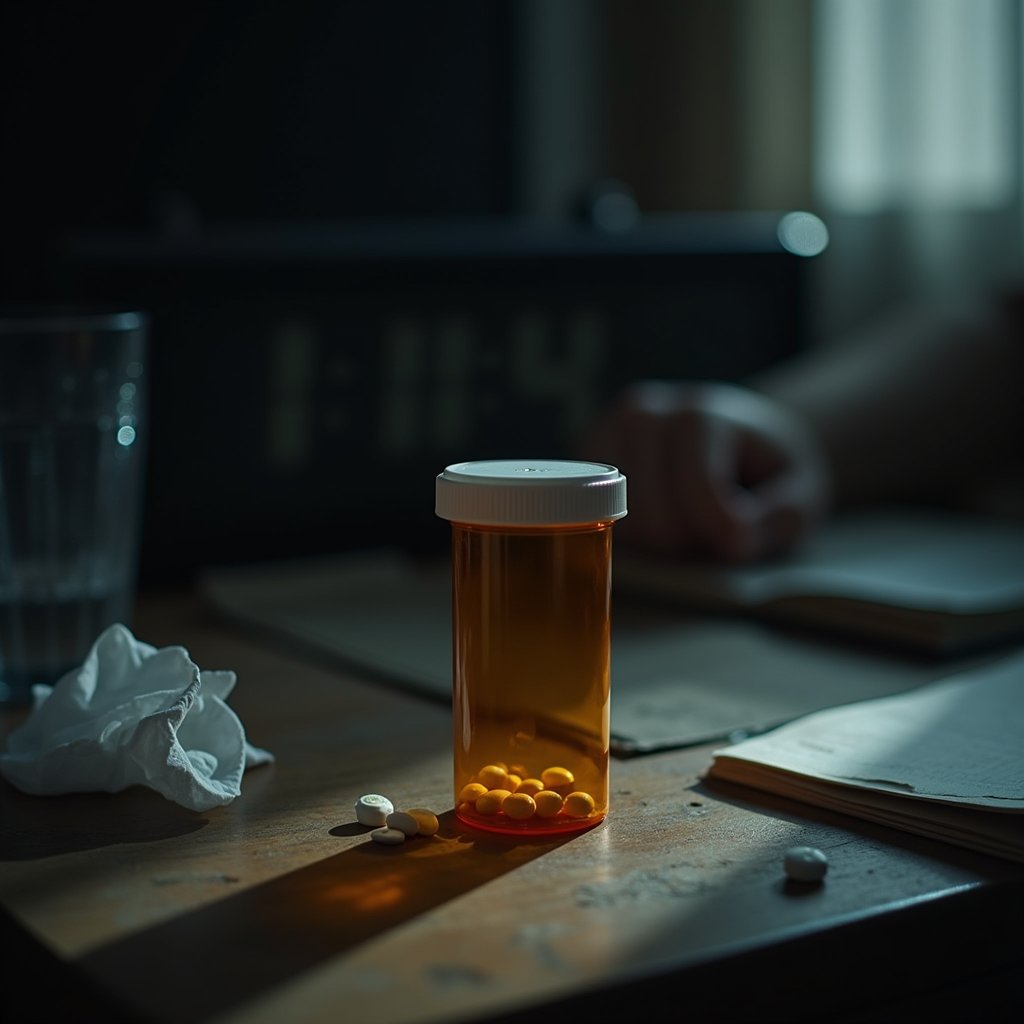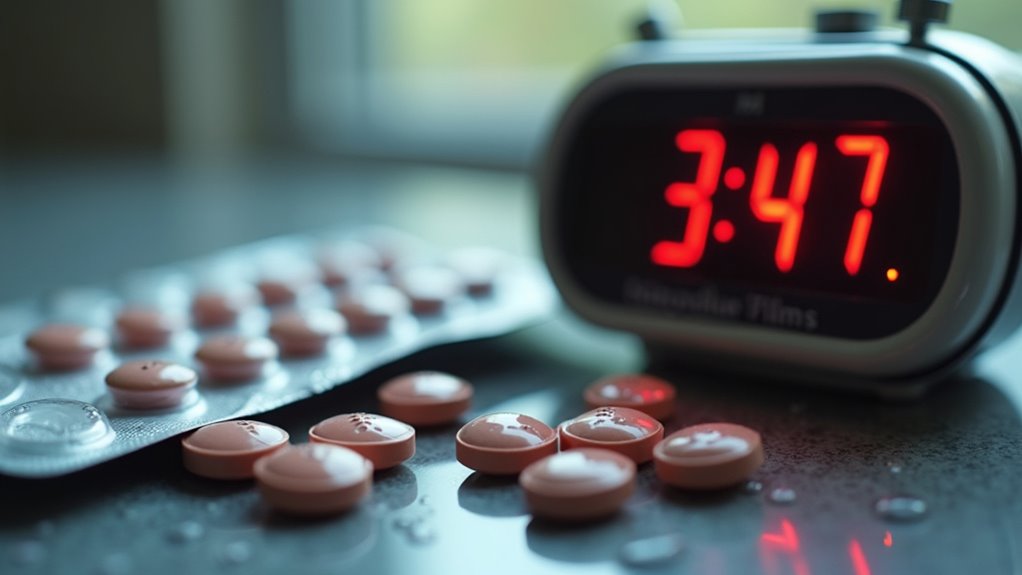You’ll need to wait different lengths of time after your most recent opioid use before commencing Suboxone, depending on the type of opioid. Short-acting opioids require 8-12 hours, while long-acting ones like methadone need 36-72 hours. Your withdrawal symptoms must reach a specific severity (COWS score ≥8) before taking your initial dose. Factors like metabolism, dosage history, and drug type affect timing. Understanding these precise windows helps prevent dangerous precipitated withdrawal.
Understanding the Last-Use Window for Different Opioids

When shifting from opioids to Suboxone treatment, understanding the correct timing window between your last opioid use and initial Suboxone dose is critical for safety and effectiveness. If you’re using short-acting opioids like heroin or oxycodone, you’ll need to wait 8-12 hours after your last dose, while long-acting opioids like methadone require 36-72 hours.
Several withdrawal severity factors influence these timing windows, including your drug’s half-life, dosage frequency, and duration of use. Your individual metabolism and overall health status also affect how quickly you’ll enter post acute withdrawal stages. The intensity of withdrawal symptoms is linked to increased dopamine activity that occurred during opioid use. Medical supervision during detoxification can help manage withdrawal symptoms and ensure safety. The uncomfortable withdrawal process occurs because the body becomes dependent on opioids for normal functioning.
For short-acting opioids, you’ll typically experience peak symptoms within 24-72 hours, while long-acting opioid withdrawal may peak between 3-8 days. Proper timing helps prevent precipitated withdrawal and guarantees ideal treatment outcomes.
Key Signs of Withdrawal Before Starting Treatment

Before beginning Suboxone treatment, recognizing withdrawal symptoms accurately helps determine your readiness for the initial dose. You’ll need to experience moderate withdrawal to safely start treatment, as premature administration can trigger precipitated withdrawal.
Identifying withdrawal symptoms is crucial before starting Suboxone, as timing the initial dose correctly prevents potentially dangerous complications.
Key physical and psychological indicators that signal appropriate timing include:
- Early signs like yawning, sweating, runny nose, and muscle aches within hours of your last opioid use
- Gastrointestinal distress, including stomach cramps, nausea, and potential vomiting
- Central nervous system responses such as anxiety, restlessness, and heightened heart rate
Managing intense cravings during this period is fundamental, as they’ll peak within 48-72 hours after your last dose. Patients should note that withdrawal symptoms from methadone develop slower compared to those from other opioids. Your healthcare provider will assess these symptoms to guarantee you’re in sufficient withdrawal before administering Suboxone, reducing the risk of complications. Drug testing and exams help confirm your withdrawal state and ensure proper diagnosis before treatment begins.
The Science Behind Timing Your First Dose

The scientific principles behind Suboxone timing revolve around receptor pharmacology and opioid clearance rates. Your body needs sufficient time to clear existing opioids before starting Suboxone – 12-24 hours for short-acting opioids and 36-72 hours for long-acting ones. This timing guarantees patient safety and prevents dangerous medication interactions. Research shows that higher doses of 16mg or greater help reduce early treatment dropout. Clinical interviews with doctors help determine the appropriate individualized timeline based on your specific opioid use history.
The science focuses on receptor occupancy and competition. Since Suboxone is a partial opioid agonist, it can displace remaining opioids from your receptors too quickly if taken too soon, triggering severe withdrawal. Your COWS score must reach ≥8, indicating adequate withdrawal, before initiating treatment. Starting with 4-8 mg allows for careful titration while monitoring your body’s response. Most patients experience relief as effects peak quickly, typically around 100 minutes after the initial dose. These precise timing protocols optimize treatment success while minimizing withdrawal risks.
Home vs. Clinical Setting: When to Take Your Initial Dose
Deciding between home and clinical induction requires careful consideration of your individual risk factors and circumstances. Your healthcare provider will evaluate specific treatment setting prerequisites to determine the safest approach for your initial dose.
Key differences in dose escalation protocols between settings include:
- Clinical settings start with 2-4mg doses under direct supervision, allowing for rapid titration up to 8mg on day one with monitoring every 2 hours
- Home induction typically begins with a standard 4mg dose and requires slower escalation to guarantee safety
- Your withdrawal severity must reach a SOWS score ≥17 in either setting before starting treatment
If you have complex health conditions, a history of overdose, or take multiple medications, you’ll need clinical induction. Home induction remains an option if you’re medically stable and can reliably follow safety protocols. With the shift from heroin to fentanyl use, patients may need to wait 3 or more days before starting buprenorphine to avoid precipitated withdrawal.
Safe Monitoring Practices During the First 24 Hours
During your preliminary 24 hours of Suboxone treatment, thorough monitoring guarantees both safety and ideal therapeutic response. Your healthcare provider will track your withdrawal symptoms using standardized tools like COWS/SOWS, ensuring you’ve reached a score of ≥17 before initiating treatment. They’ll assess key indicators including anxiety, sweating, and nausea.
For dosage adjustments during induction, you’ll receive 2-4 mg increments every two hours as needed, not exceeding 8 mg on Day 1. Managing withdrawal risk with naloxone requires strict sublingual administration to minimize absorption. Your provider will document any cravings, side effects, or withdrawal symptoms throughout this period.
They’ll evaluate your response at each dose adjustment, watching for signs of intoxication like sedation or dizziness. If these occur, they’ll reduce your dose by 2 mg.
Frequently Asked Questions
Can I Drink Alcohol or Take Sleeping Pills While Starting Suboxone?
You should completely avoid mixing alcohol or sleeping pills with Suboxone, especially during initiation. These substances can dangerously increase your risk of respiratory depression and overdose when combined with buprenorphine.
To maintain recovery and guarantee your safety, don’t use any central nervous system depressants while starting Suboxone. Always consult your healthcare provider about specific medications or substances, as they’ll need to supervise your treatment closely during this critical phase.
What Happens if I Get Pregnant While Taking Suboxone?
If you become pregnant while taking Suboxone, don’t stop taking it suddenly – this could be dangerous for both you and your baby. Research shows Suboxone is safer than untreated opioid dependence during pregnancy.
You’ll need close monitoring as pregnancy may affect your dosage needs. While there are potential health risks, including neonatal abstinence syndrome, studies show reduced complications compared to untreated pregnancies.
Inform your healthcare provider immediately to develop an appropriate pregnancy management plan.
How Long Will I Need to Stay on Suboxone Treatment?
The length of Suboxone maintenance varies based on your individual needs, but research shows longer treatment periods (over 365 days) typically lead to better outcomes.
You’ll work with your doctor on dosage adjustments over time, usually starting at a higher dose (16+ mg) and stabilizing between 8-24 mg.
While some people stay on treatment for years, others may gradually taper off. Early discontinuation (less than 6 months) increases your risk of relapse and overdose.
Will My Insurance Cover Suboxone Treatment and Related Medical Appointments?
Most insurance plans, including Medicaid and private insurance, cover Suboxone treatment and related appointments. You’ll need to check your specific plan’s prior authorization requirements and potential out-of-pocket expenses.
Medicaid typically offers extensive coverage with minimal costs, while private insurance coverage varies by carrier. Contact your insurance provider directly to verify coverage details, including copays, deductibles, and whether you’ll need to use in-network providers for ideal coverage.
Can I Drive or Operate Machinery After Taking My First Suboxone Dose?
You shouldn’t drive or operate machinery after your inaugural Suboxone dose. Initial doses commonly cause significant driving ability impairment through drowsiness, slowed reactions, and reduced coordination.
Even with a valid prescription, you could face DUI charges if you’re impaired while driving. Machinery operation risks are also high during this period. Wait until you’ve stabilized on your medication and your doctor confirms it’s safe to resume these activities.

